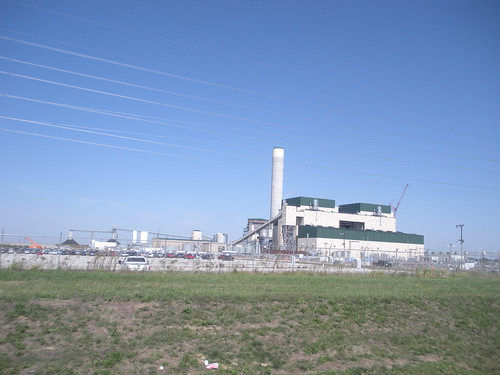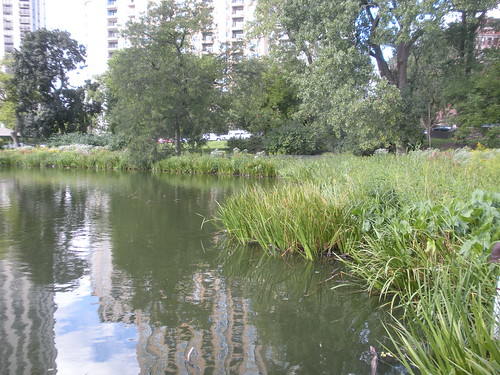Day 39 through 43
Day 39—Monday, Sept. 26
On Monday I attended our staff development meeting. We discussed several of the projects that are either under review or construction. We also talked about the challenge of helping people understand and follow through our development process which is as follows: during the concept stage, our staff meets with the applicant and discusses the project and explains the steps necessary to move through the process. Then once we receive a submittal, all departments prepare a review and our development department sends out a comprehensive review letter. This submittal-review process then repeats until the plans have been approved. Then permits can be issued and construction can begin. If a special use or zoning change is required, then there is a planning commission meeting, recommendation, and subsequent council consideration prior to permits being issued and final approval of the plans.
So we are trying to come up with a solution that will readily convey the process and provide guidance throughout. We have a few ideas, but will continue the discussion over more meetings.
ARRA Project Close-out
I’ve been working on closing out last year’s federal ARRA project for some time now. It is always amazing to me that design can take a couple months, construction can be completed in a month or two, but finalizing the close-out documents can take a year or more. This can happen for many reasons, but in this case, it’s been because I’ve been waiting for certifications for materials used on the job. And I need this information because I cannot determine the final quantities used on the job or send in pay requests for items unless the contractor provides proof that the material meets the specification. Finally for one of our items, we had to just delete it because the subcontractor simply would not provide the documentation. The general contractor and I even tried to get it from the supplier of the material, but they also would not provide the information.
So today I went through all my material documentation and made sure it met the requirements and that I had all the forms filled out correctly and signed. I also checked all the quantities and created what is known as a balancing authorization. This is necessary to prepare and submit for approval at the end of the job because we can only pay for the actual amount of an item that has been approved. For example, if the project was bid out at 700 tons of asphalt, but we actually used 750 tons, I would need to first send in an authorization asking to add 50 tons of asphalt to the project before I could pay the contractor the full 750 tons. Until I received approval for that extra 50 tons, I could only submit a pay request for 700 tons. And in reverse, if we only used 650 tons, I could pay for the whole amount, but at the end of the job, I would need to deduct 50 tons from the project so the final amounts equaled exactly what was actually used.
Day 40—Tuesday, Sept. 27
On Tuesday, we had a meeting about a few developments that still have outstanding letters of credit. The reason we are looking into the status of these projects is because they’ve been out there for some time, and there are still some public improvements that need to be made. It seems like many cities are dealing with this because of the economy and housing crisis. People stopped building in subdivisions that were not yet completed and the developer never finished the improvements. But the people who did build don’t want to wait for the economy to turn around to get the road finished, the trees planted, and their sidewalks placed. So cities are moving forward to complete those improvements, particularly in cases where a letter of credit was filed that can help pay for them.
After lunch, our intern and I drove up to IDOT to drop off the documents I had prepared yesterday. We like to do this because some paperwork is too important to just put in the mail. It was nice because I was able to meet some of the people I have been working with only over the phone, and our intern was able to see the process and meet some of the people we work with.
Day 41—Wednesday, Sept. 28
This morning we had our bi-weekly staff meeting. Everyone shared the status of their projects as usual. We have one culvert lining project out to bid and have already started getting ready for next year’s road project. Then during the lunch hour, the group of us who were traveling to Prairie State left to drive down south. This trip took up the remainder of our day.
Day 42—Thursday, Sept. 29
Prairie State
On Thursday, we toured the Prairie State Power Plant and Lively Grove Mine. Our city is one of eight partners making up the ownership of this facility. So our staff regularly attends meetings, and a group of staff and elected officials take an annual trip to see the progress of construction of the plant. This was my first year to go on the annual trip, and it was particularly interesting because the plant is nearly complete. The first coal was fired last week in the first unit, and the operators expect to feed into the grid for the first time next week. There is another unit that is currently under construction and has a completion date of mid 2012.
Our day started with a quick update on the facility. Then several of us were taken down into the mine in groups of six. This was the first time I had ever been in a coal mine. The Lively Grove Mine is about 250 to 275 feet deep with tunnels laid out in a grid pattern and measuring 18 feet wide by about 7 feet tall. I wish I could have taken pictures to share with everyone the experience, but they were strict about no photography allowed. Before we could go in the mine, we were outfitted with safety equipment and taught how to use an oxygen container in case something happened while we were down there. I even wore a hard hat with a little miner light on it.
We drove down into the mine in a small open metal vehicle down a steep slope. Once at the bottom we followed a main corridor excavated out of the coal and now lined with lime dust. Eventually we stopped and got out to walk. Our guide took us to where a machine was cutting out the coal and conveying it to a vehicle. This vehicle when full would then take the load of coal, up to 10 tons, to the main conveyor and discharge it onto the belt. Then it would return to be loaded again.
We also watched a crew installing the metal mesh and supports for the roof of the tunnel. They showed us the metal rods and “glue sticks” they would push up into the roof to create a header. Then a wire mesh would be anchored over these. While the ceiling of the tunnel seemed to be made of rock, the floor appeared to be clay covered in lime and coal dust.
One of the interesting things I eventually figured out was to look at something, I would need to turn my head directly towards it. This was because the only light came from the lights on our hats. And I noticed when you talked to someone, you had to make sure you were not focusing the light on their face.
I also couldn’t help thinking while down there about my ancestors, many of whom worked in coal mines in Kentucky and in England. The safety precautions now are so much more intense than they were back then. We had ventilation, gas detection, oxygen, lights, power, wireless GPS, and many more features they did not have in the early 1900s.
After the mine tour, we were taken through the actual plant. Here power is generated from turbines turned by steam. The steam is created by burning the coal taken from the mine. They told us this is the largest coal-fired power plant that has been built in the U.S. in the last 30 years. It had to be built to meet strict air quality regulations—$1 billion was spent just on the air quality treatment and components.
The plant also uses 25 million gallons of treated water a day for their operation. They have an onsite pond and treatment facility to produce high quality water. When finished the power plant will produce 1600 MW of power for the grid and 150 MW for its own operation.
Day 43—Friday, Sept. 30, 2011
On Friday, I worked to catch up on emails and other issues that had come up while I was gone. Most of my day was spent working with other staff to resolve the review of a development. They owners of this project had considered changing the design of some of the infrastructure, but since they already had their plans approved, they decided not to go ahead with the change. It would have required them to re-submit and wait for another review. We also had a conference call with the owner/developer and explained they could not begin construction on any work requiring an IEPA permit until it was approved and a copy sent to us.
Smith and Richardson Tour
A few of us also were fortunate to be able to tour another manufacturing business in our city—Smith and Richardson. This company has been in Geneva for many years and moved to their current location in the 1940s. They make all different kinds of parts for many different industries. An interesting issue brought up during our tour is that our country does not seem to be training people to work in these types of industries. This company has job openings for skilled labor, but they have difficulty finding people who can work that type of job. This is something we have been hearing at several of our tours. Because U.S. schools are so focused on pushing kids to go to college, few end up pursuing careers in manufacturing or other trades. So these industries have job openings, but there is no one to fill the jobs.
Retirement Lunch
Today was also the last day for one of our co-workers who worked at the wastewater plant. So during lunch the people at the plant arranged to cook food, and we were all invited to eat down at the plant. Only a bunch of public works people would gladly show up to eat lunch on the lawn of a wastewater plant next to the clarifiers and think nothing of it.




